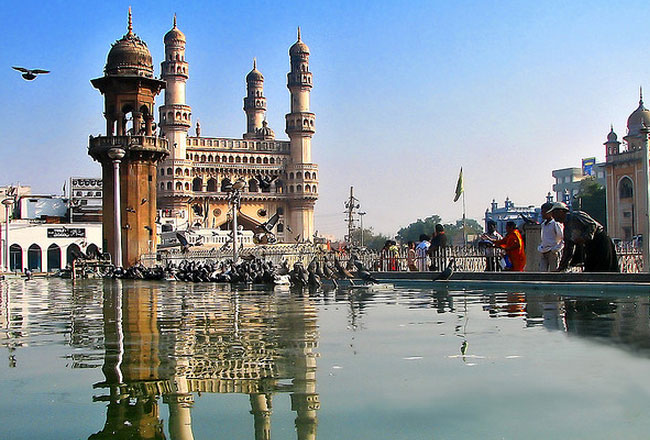The Charminar in Hyderabad was constructed in 1591 by Mohammed Quli Qutab Shah, to mark the end of plague in the Hyderabad city. Since the construction of the Charminar, the Hyderabad city has almost become synonymous with the monument. The Charminar is a massive and impressive structure with four minarets, situated on the east bank of Musi river. In the evening, with illumination, the great Charminar looks even greater.
The landmark has become a global icon of Hyderabad, listed among the most recognized structures of India. The English name is a translation and combination of the Urdu words Chār and Minar or meenar, translating to "Four Towers"; the eponymous towers are ornate minarets attached and supported by four grand arches.
The Charminar has four imposing arches, which face the four main directions. A row of small vaulted niches ornament each of the four arches. The Char Minar is a two-storied building with the first floor being covered. The balconies on this floor provide a great view of the surrounding areas. A small mosque adorns the top floor of the Charminar. This mosque is situated on the western side of the Charminar facing Mecca, the holy city of the Muslims. The Charminar is square in shape, each side measuring 100 feet, with a central pointed high arch at the center.
The four minarets of the Charminar dominate the landscape of the region. The minarets, their domed finials rising from their lotus-leaves cushion, rise to 180 feet from the ground. The whole structure contains various small and ornamental arches arranged in vertical and horizontal fashion. The Charminar was constructed in the intersection of the historical trade route that connects the markets of Golkonda with the port city of Machilipatnam. The Old City of Hyderabad was designed with Charminar as its centerpiece.
